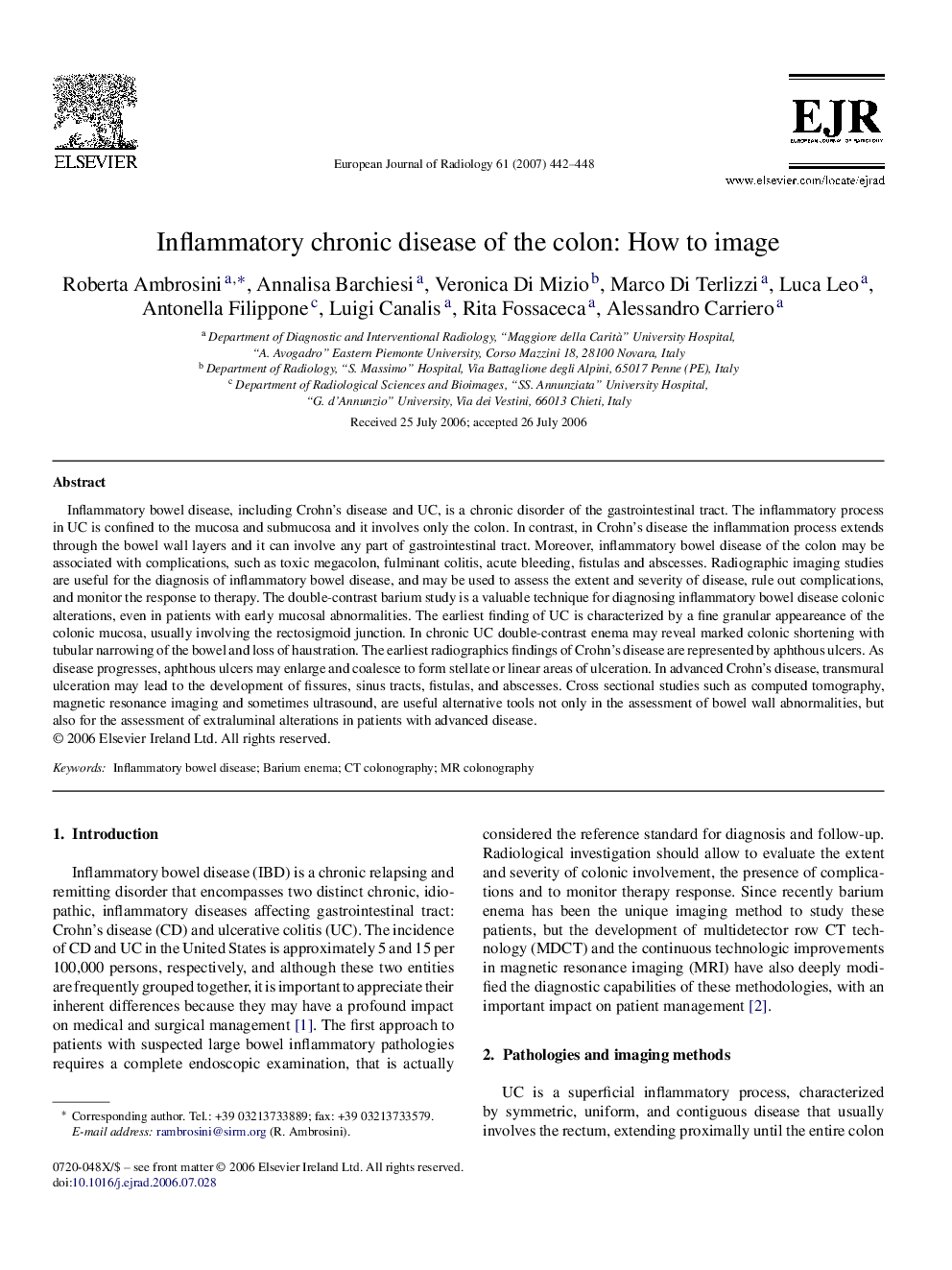| Article ID | Journal | Published Year | Pages | File Type |
|---|---|---|---|---|
| 4228493 | European Journal of Radiology | 2007 | 7 Pages |
Inflammatory bowel disease, including Crohn's disease and UC, is a chronic disorder of the gastrointestinal tract. The inflammatory process in UC is confined to the mucosa and submucosa and it involves only the colon. In contrast, in Crohn's disease the inflammation process extends through the bowel wall layers and it can involve any part of gastrointestinal tract. Moreover, inflammatory bowel disease of the colon may be associated with complications, such as toxic megacolon, fulminant colitis, acute bleeding, fistulas and abscesses. Radiographic imaging studies are useful for the diagnosis of inflammatory bowel disease, and may be used to assess the extent and severity of disease, rule out complications, and monitor the response to therapy. The double-contrast barium study is a valuable technique for diagnosing inflammatory bowel disease colonic alterations, even in patients with early mucosal abnormalities. The earliest finding of UC is characterized by a fine granular appeareance of the colonic mucosa, usually involving the rectosigmoid junction. In chronic UC double-contrast enema may reveal marked colonic shortening with tubular narrowing of the bowel and loss of haustration. The earliest radiographics findings of Crohn's disease are represented by aphthous ulcers. As disease progresses, aphthous ulcers may enlarge and coalesce to form stellate or linear areas of ulceration. In advanced Crohn's disease, transmural ulceration may lead to the development of fissures, sinus tracts, fistulas, and abscesses. Cross sectional studies such as computed tomography, magnetic resonance imaging and sometimes ultrasound, are useful alternative tools not only in the assessment of bowel wall abnormalities, but also for the assessment of extraluminal alterations in patients with advanced disease.
